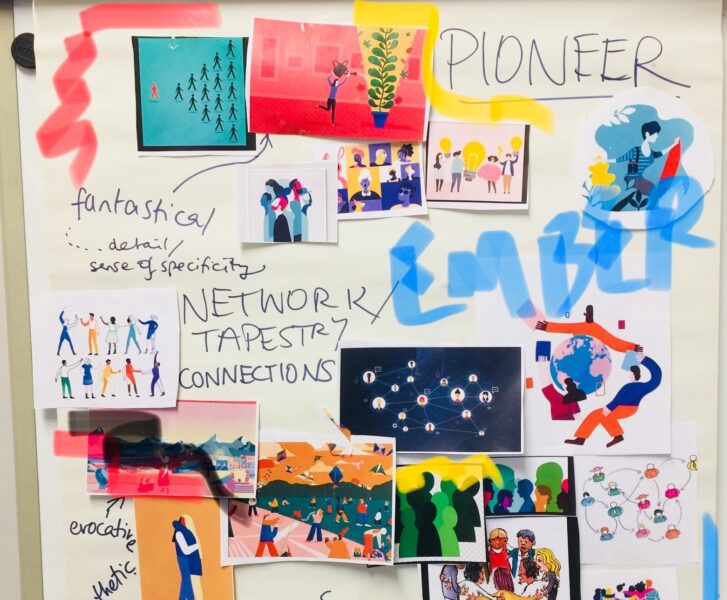One year of Ember: What we've learnt so far
Feb 02, 2019

In the last couple of years, there has been a surge in attention and funding for global mental health. Ember was born from the observation that, despite this welcome shift, there is still very little support available for small organisations working to nurture the mental health of their own communities from the grassroots up. Through Ember, the SHM Foundation and Mental Health Innovation Network came together to find ways of unlocking that support.
Over the last year, we’ve worked with six innovations providing care in different parts of the world. Buena Semilla runs women’s circles in indigenous communities in Guatemala. The Benue State CCMHP trains community-level health workers to run mental health clinics in Nigeria. FaNs for Kids educates families of children with developmental disorders in Pakistan to support and advocate for their needs. PDO Kenya works to raise awareness and destigmatise mental illness, while providing peer-to-peer support. Phola uses storytelling and art to empower people who’ve experienced trauma in South Africa. Tunnel Light is developing ways of supporting children with autism and their families in rural Ghana.
These organisations are providing care where others are not, often reaching the most marginalised communities with no other access to services. Their diverse, innovative methods are centred on the people they work with, drawing on local expertise and grounded in a deep understanding of their communities’ needs. Such an approach requires not just skill and creativity, but empathy; and they have it in abundance.

Ember exists to support, strengthen and grow these grassroots innovations in mental health. Over the course of our work together, we have developed the Ember Health Check, a methodology for identifying the gaps, challenges or barriers these organisations face, and a toolkit of participatory approaches to support them. We’ve learnt many things from this process, but there are three insights in particular that will shape Ember’s work going forward.
1. It’s not all about scale
Forgive me for stating the obvious: global mental health is a complex field. It encompasses a wide array of conditions, which are experienced and understood differently across cultures, populations and geographies. As a result, there is no one-size-fits-all solution to improve mental health worldwide. Buena Semilla’s Women’s Circles, for instance, are co-designed with participants and tailored to the needs and expectations of Mayan communities. They could not simply be copy-pasted into another context and expected to see the same level of engagement and impact, without rethinking how the model works. This complicates traditional notions of scale-up. The big challenge in global mental health is to increase the reach and coverage of services without sacrificing complexity or diversity.
2. There is innovation and resourcefulness at the grassroots
The organisations we’ve worked with this year have responded to this complexity – and the limited resources available to them – by developing a huge range of creative and participatory approaches to mental health care. Drawing on their intimate understanding of the local context, they use tools and approaches that engage people in meaningful and lasting ways, overcome local manifestations of stigma and make efficient use of scant resources. For instance, PDO Kenya has trained people in prisons in basic cognitive behavioural therapy techniques, so that they can provide support to fellow inmates. FaNs for Kids overcomes the stigma and misunderstanding that surround mental health in Pakistan by using an app to identify families who have children with developmental disorders and empowering these families to support each other . There is so much to learn from these innovative approaches – lessons that are transferable across populations and geographies. Which leads me onto our third observation.

3. We need a wider range of voices in the global mental health space
It is amazing how much more attention and funding mental health is getting these days. Some of this success is in fact the product of different people coming together to speak with a common voice and call for global action on mental health. However, we still need to keep space in that conversation to allow for difference. Often it’s the voices of people from the communities directly affected that are missing from this conversation, and yet they are the ones whose expertise is most needed. Phola, for example, has taught us the power of looking to the South African tradition—as opposed to therapeutic techniques generated in the Global North—to develop new approaches to care that really resonate with people affected by trauma. But this important work does not receive the recognition it deserves.
Our next steps
In the coming months, Ember will be working with more grassroots organisations across the globe. Our work together will be shaped by the insights gleaned this year and adapted as we learn more from their experiences. Together, we hope to move closer to a world where everyone has access to the mental health care they need.